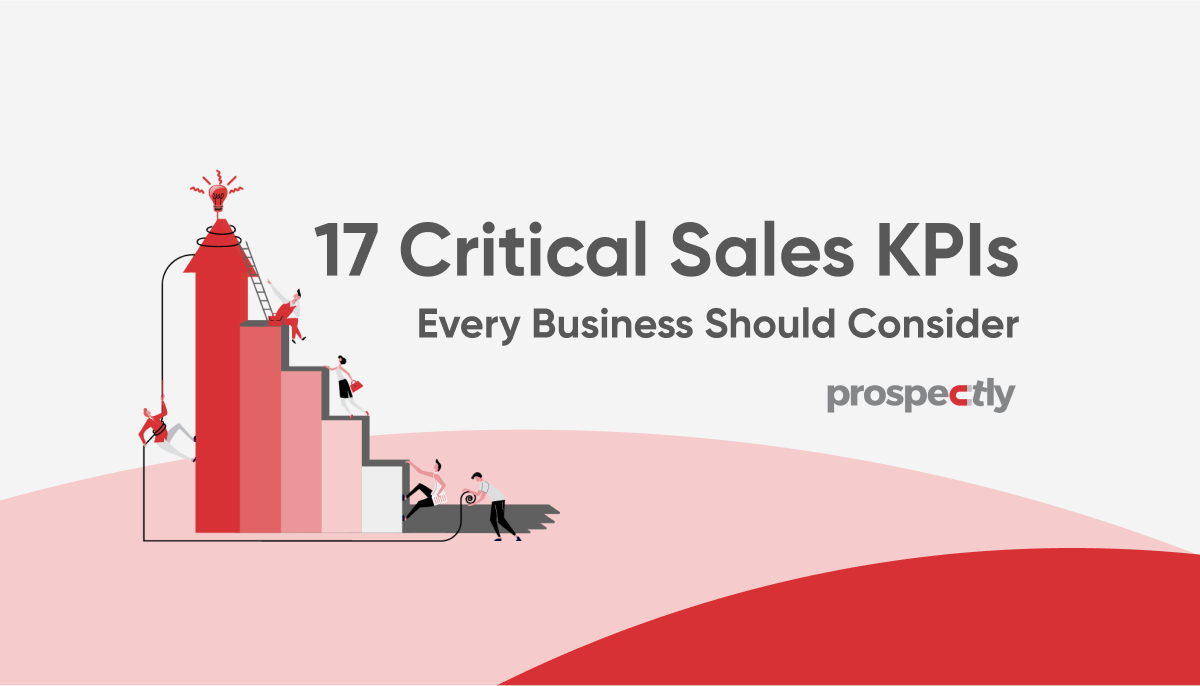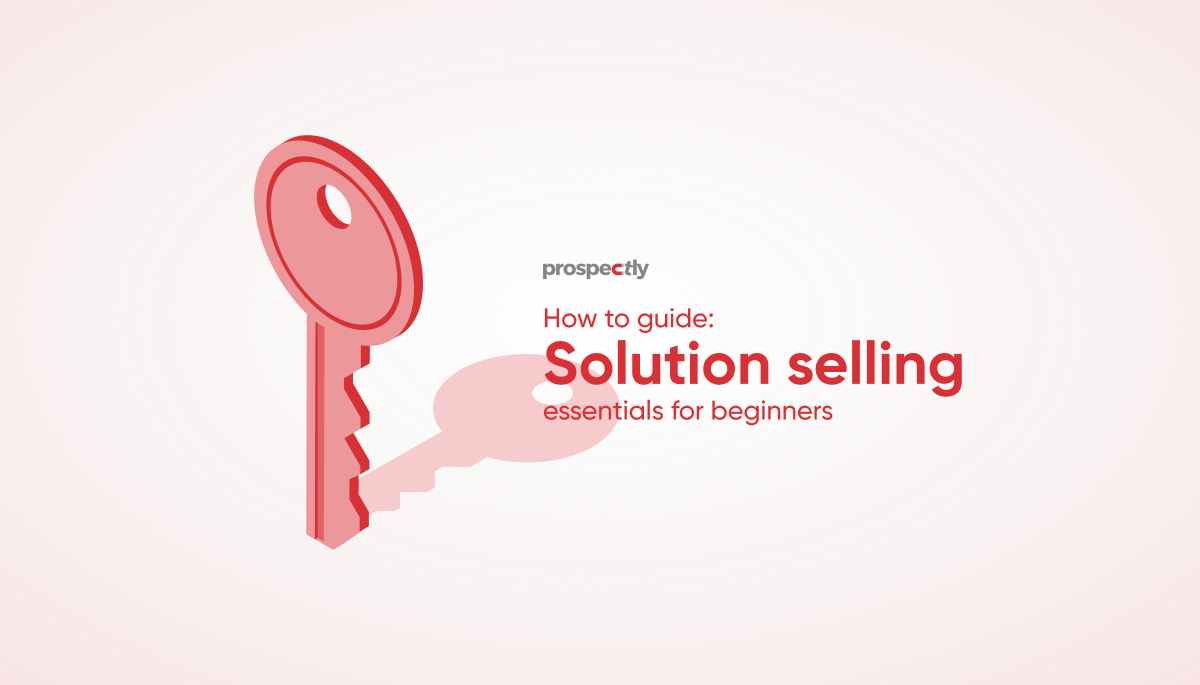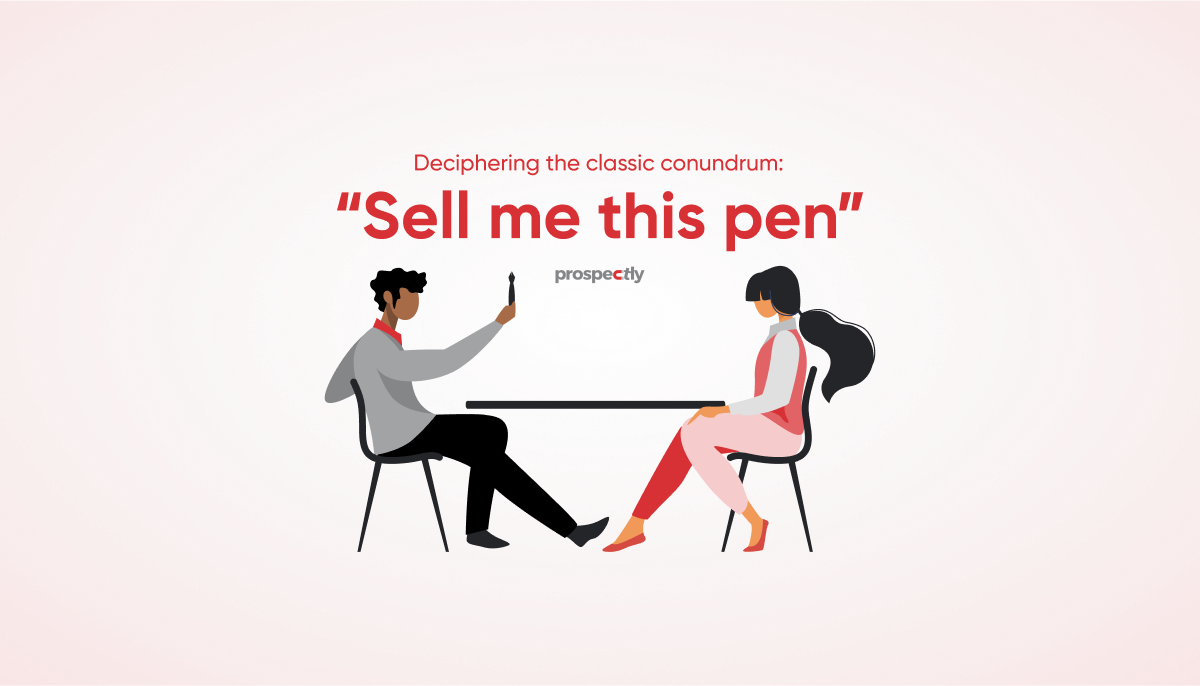Sales enablement: Your guiding framework to sales success
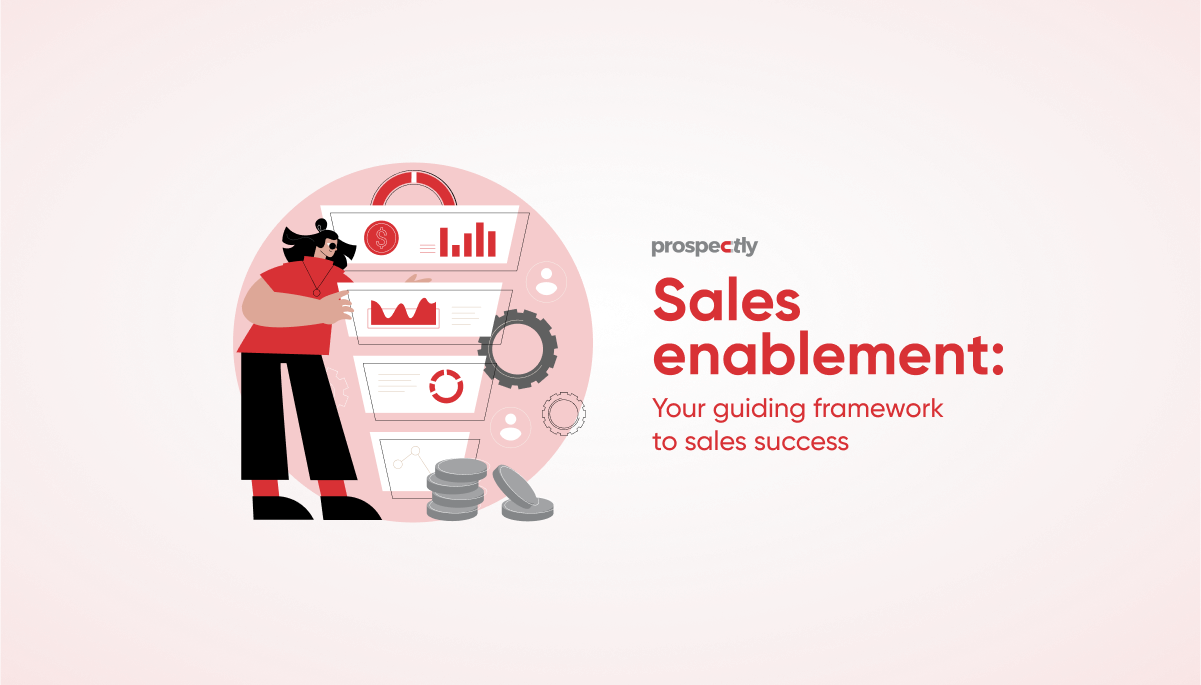
In a fast-paced profession like sales, you must be consistently on your toes to maintain your winning streak. With the ever-increasing pressures for meeting your KPIs and sales quotas in today’s customer-centric economy, wouldn’t it be great to have a team you can bank on? Would you like a support system that does all the groundwork and provides the resources for engaging your clients, upskilling, and excelling as a salesperson? If you answered yes, you need a sales enablement strategy/team.
This blog will emphasize decoding sales enablement and how you can harness this superpower to outpace the competition.
What is sales enablement?
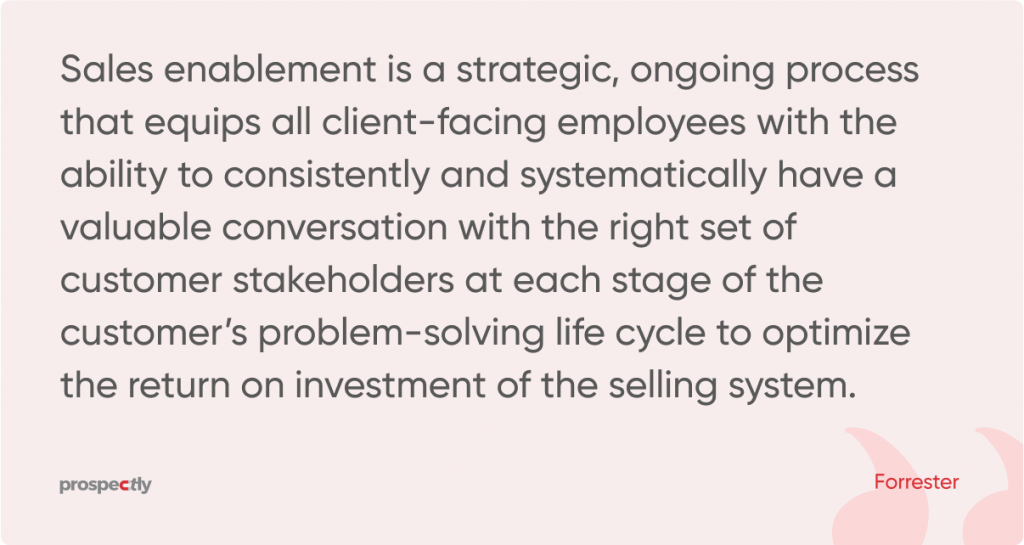
Sales enablement is a blanket term for the information (resources, guidance, and training) offered to you as a salesperson to engage buyers. It helps you better manage your busy schedule and offer relevant content and personalized solutions to your potential customers. Additionally, sales enablement guides you to acquire the skills needed to be an outstanding sales rep.
According to Gartner, this information is grouped into two categories.
i) Content that you will offer prospective buyers.
ii) Best practices, research, and tools you will consume as a salesperson.
Brainshark’s Fifth Annual Sales Enablement study indicates that companies with a defined sales enablement strategy have 15% better win rates than those without it. It also found that sales enablement was more relevant for larger organizations.
What is the role of sales enablement teams?
Here are a sales enablement team’s chief roles and responsibilities, courtesy of Brainshark. Although, these may vary based on company size, industry, sales enablement team structure, and the sales team’s requirements.
- Onboarding sales teams
- Owning and executing recurrent learning programs and sales coaching strategy
- Creating the content, resources, and training material used in sales enablement programs.
- Sales and cross-functional communications
- Managing sales tools and implementing best practices
- Tracking and reporting performance of sales enablement programs
Why is sales enablement important?
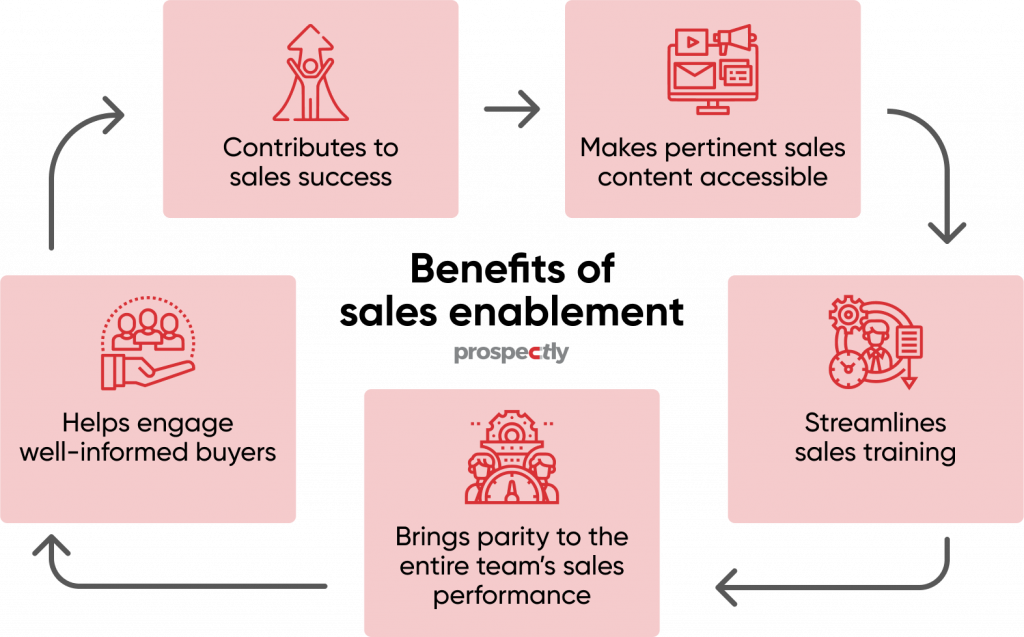
Listed below are some primary reasons you need a sales enablement strategy.
Contributes to sales success
A well-defined sales enablement strategy increases your sales revenue, shortens the sales cycle, and creates up-sell and cross-sell opportunities with existing clients. Here are some encouraging stats shared by Oracle.
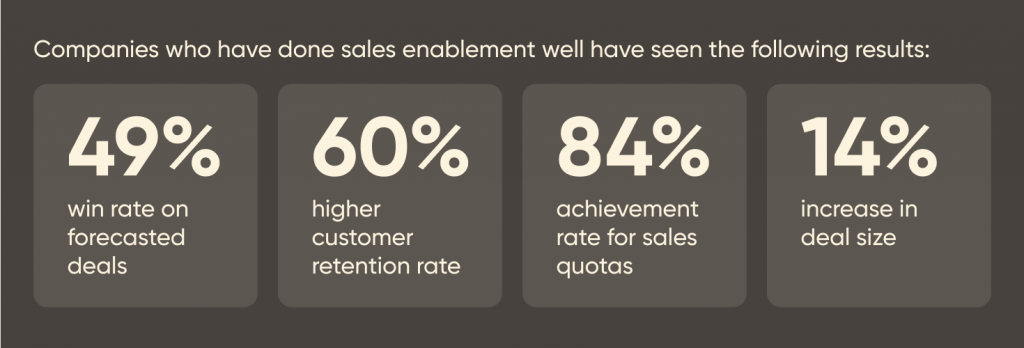
Makes pertinent sales content accessible
As sales went digital, sales content also moved online – mostly scattered between various web pages and portals. Hunting for relevant content amidst busy schedules can become overwhelming for salespeople. Moreover, the inability to access the right content at the right time compels sales reps to create content in haste and stick with outdated or flaccid content to save time.
An effective sales enablement strategy helps you manage and organize sales content under one platform. It also consolidates information shared between the various internal teams.
Helps engage well-informed buyers
Modern buyers are increasingly becoming more independent and well-informed due to the unlimited resources and choices at their disposal. Research indicates that an average B2B customer consumes 13 pieces of content before making a buying decision. Also, 74% of buyers choose sellers who proactively offer value and insights. Hence, conventional sales and marketing tactics do not suffice in a digitally connected ecosystem. Sales enablement provides the most current and fitting content to engage your potential customers and address their pain points.
Brings parity to the entire team’s sales performance
If applied to sales performance, the 80/20 rule claims that 20% of top-performing sales reps bring in 80% of the revenue. An effective sales enablement strategy helps scale the sales organization beyond a few high-performers. It makes the knowledge, resources, tools, and best practices accessible to the entire salesforce giving every sales rep a fighting chance and opportunity to achieve their quotas. Gartner suggests designating sales overachievers as leaders of such programs.
Streamlines sales training
Instead of being forced to attend unplanned training sessions or, worst, sell with no training or resources, sales enablement helps align your learning goals with the sales training agenda. By analyzing sales performance and based on research-backed data, sales enablement teams can ensure regular trainings, certifications, product updates or tutorials, etc., can fit into your busy schedule.
What does a sales enablement framework look like?
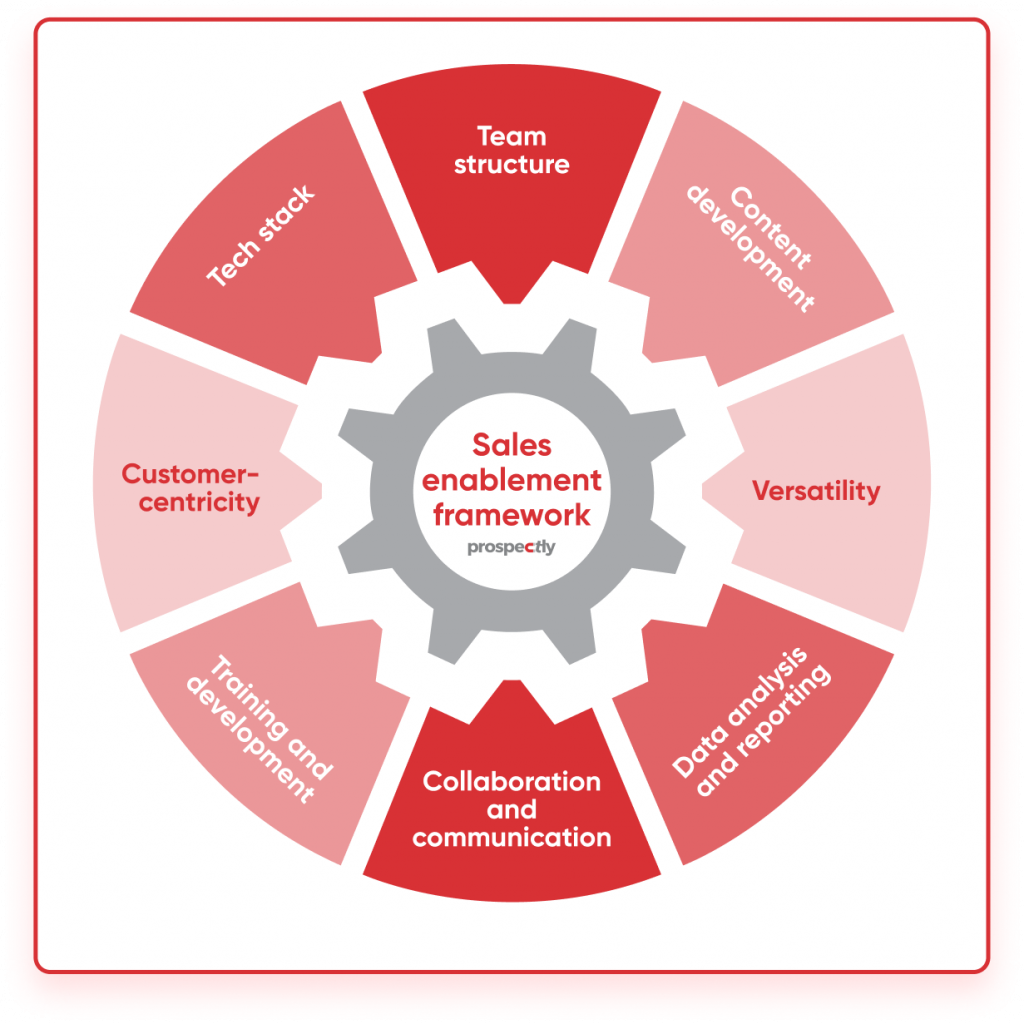
This section will focus on the essential components of a winning sales enablement framework.
Team structure
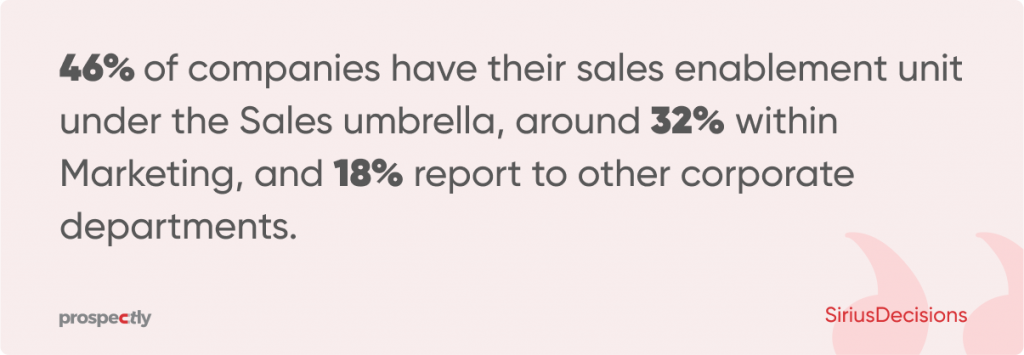
As a discipline, sales enablement is cross-functional and varies across organizations. At its inception, it was assigned to business functions like sales, marketing, and customer service. But with time, it has emerged as an independent domain.
Here are some foundational rules on the structure of the sales enablement team, as directed by Gartner.
- Sales and Marketing should jointly own sales enablement based on the resources (usually content, conversation guides, and sales training) needed for individual programs.
- Marketing is responsible for creating the majority of these resources and training the sales organization.
- Sales operations administers the information that sales receives as a part of the program.
- Sales management is generally the one to implement the program.
Content development
Building and optimizing relevant content for various stages of the sale process is a crucial component of your sales enablement strategy. This task weighs collectively on both sales and marketing. Take a look at these key principles for optimizing your sales content.
- Sometimes, instead of creating new sales content, the best approach can be to organize your existing content gallery. Conduct a thorough analysis of your in-house content and centralize the relevant information in one location, so it is easily accessible and ready to be shared with your targets.
- Some top content categories to look out for are blogs, case studies, whitepapers, e-books, demo decks, pricing charts, competitive analysis, webinars, etc. Pay special attention to customer case studies highlighting success stories as it helps affirm your target’s confidence in your product/service.
- Sales enablement teams should also invest in creating customizable sales email templates. As emails are your predominant mode of communication in sales, having a few templates handly could save you a lot of time and energy.
Versatility
Ease of use is a fundamental feature of your sales enablement strategy. The resources built/collated should be accessible and applicable across the sales organization. It is also essential to measure its usability to improve future sales enablement efforts.
Data analysis and reporting
The ability to make data-driven decisions is cardinal for high-performing salespeople. However, managing the massive influx of data in our sales systems can be overwhelming for the average sales rep. This is where sales enablement comes in.
- By analyzing heaps of raw data, sales enablement tracks important metrics which help measure sales success. Some of these metrics are-
- Sales activities logged
- Leads generated
- Product demos delivered
- Deals won and lost
- Average size of deals
- Average length of the sales cycle
- Number of reps who achieve/exceed quota, etc.
- Sales enablement teams conduct an in-depth analysis of sales reports and highlight any possible disconnect. Such audits help emphasize areas of improvement.
- It can also augment your lead qualification process. They can implement intelligent lead scoring systems by analyzing historical data and determine if a lead is qualified to enter your sales funnel.
Pro tip: Read our comprehensive blog on sales lead qualification.
Collaboration and communication
Sales enablement is a broad domain and requires collaboration between sales, marketing, and other important lines of business. In order to maintain consistent brand messaging and avoid conflicts among prospective buyers, it is crucial to adopt company-wide communication systems that auto-sync all employees on new workflow updates, resources, etc. Also, develop a practice of frequent and proactive communication between various related departments within sales enablement.
Training and development
Any standard sales enablement program includes ongoing learning for sales teams through training programs. This enables salespeople to use the resources allocated as part of the program effectively.
Gartner claims that the biggest mistake companies make while designing training programs is conducting them only once a year. Formal training sessions should be held monthly to ensure salespeople retain and revisit training content, resources, and tools. Introducing newsletters and collaboration platforms will make sales enablement more accessible for sales teams.
Customer-centricity
The ultimate goal of sales enablement is to help you engage your buyers. Hence your sales enablement efforts should prioritize buyer experience. Know your prospective customers, and study and analyze their buying journey. Then build your resources, content, and training around this information to optimize the buying experience.
Tech stack
The introduction of artificial intelligence in sales processes has automated tedious but critical operational tasks.
- AI-powered sales enablement process can cut down countless manual hours spent in demand generation. By analyzing your existing client profiles, artificial intelligence can pinpoint new prospect markets, optimize target territory based on geographic account and prospect data, and even propose potential clients within your social network.
- You can automate your prospecting efforts by adding direct calendar links to your prospecting emails. This enables sales-ready prospects to schedule meetings on your calendar based on their convenience.
- Artificial intelligence has taken the guesswork out of lead qualification by compiling and coordinating data across several platforms. Automating your sales enablement process can help determine your ICP by analyzing intelligent insights like client profiles on social media, records of your client interactions from emails, messages, etc.
- You can set up preset email follow-up sequences that get triggered when a prospect hasn’t responded within a set time frame.
- AI can streamline and automate your routine customer conversations. You can set up live chats on your website to interact with inbound leads by leveraging AI assistants. It can also filter out unqualified leads and direct only the interested ones to you which saves you a lot of time in dead-end chases.
For more information on how to utilize AI to optimize your sales enablement process, read The compelling impact of artificial intelligence in sales.
Best practices in sales enablement
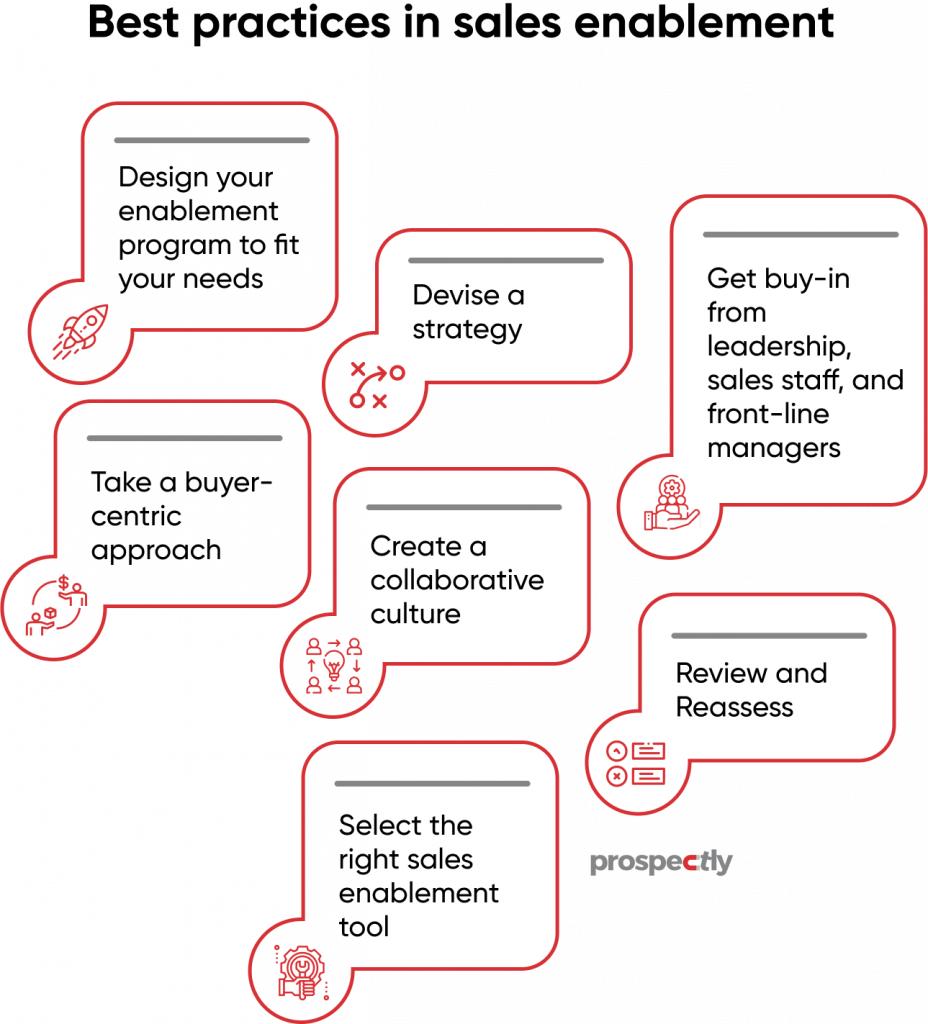
As practical as a solid sales enablement strategy can be, there are specific ground rules to leverage its full potential. Poor sales enablement like unstructured training, outdated content, or the wrong approach can be a waste of resources and result in poor sales performance. Let’s look at some of the best practices to implement sales enablement.
Design your enablement program to fit your needs
Your sales enablement needs might differ based on your company size and industry. For example, if you are into enterprise sales, you need to engage decision-makers on the buying side, which may not be the case with smaller companies.
Your needs will change based on your overall goals. For instance, if your sales teams have been consistently unable to meet their quota, you might try to find out why and then focus your enablement efforts accordingly. It can be training new hires or focusing on demand generation.
Devise a strategy
Once you know what your goals and where your gaps are, create your sales enablement strategy to address those components. It’s best to put it in writing and get a sign-off from management. Your plan or charter should focus on the program’s overall goals, team structure, target audience, critical investments, and success metrics.
CSO Insights states that charter-based sales enablement programs have 19% higher win rates than the average approach.
Get buy-in from leadership, sales staff, and front-line managers
To successfully implement your sales enablement strategy, you need support from various internal parties. Speaking their language while illustrating your agenda and incorporating their feedback is essential.
Leadership
Once you have defined your charter, the next step is to get it approved by the leadership team. Understand your management’s priorities, and align your program’s objectives to their goals. For instance, if your CEO focuses on higher sales, explain how your program can help achieve that goal. Similarly, focus on the program’s financial impact while pitching your CFO.
Sales reps
The main agenda for salespeople is usually to reach their quota. Explain to them how your sales enablement program can help them get there. If possible, share case studies for added motivation.
Sales managers
It is vital for your sales managers to clearly understand what your program aims to achieve. They are driving the sales team, so they should have faith in your strategy.
Take a buyer-centric approach
As stated earlier in the blog, enhancing your buying experience should be the focus of your enablement program. Start with understanding what your ICP wants, align your efforts with the buyer’s journey, and aim to deliver an optimal buying experience.
Create a collaborative culture
For your program to be successful, focus on building a culture based on collaboration. Ensure there is a cooperative spirit between the various sub-functions of sales enablement. Allocate dedicated resources to incorporate cross-functional training on new solutions or product launches.
Review and reassess
Make sure your sales enablement efforts and goals are quantifiable. As it is an evolving domain, be open to technological developments that strengthen your existing program. Regular review and restructuring of sales enablement plans are crucial for overall success.
Select the right sales enablement tool
A sales enablement tool or platform is a technology that streamlines the sales process and helps the sales function achieve its corporate milestones. According to sales enablement platform Highspot, modern sales enablement tools have evolved beyond a centralized sales portal into a closed-loop system that gives visibility across the entire sales content lifecycle.
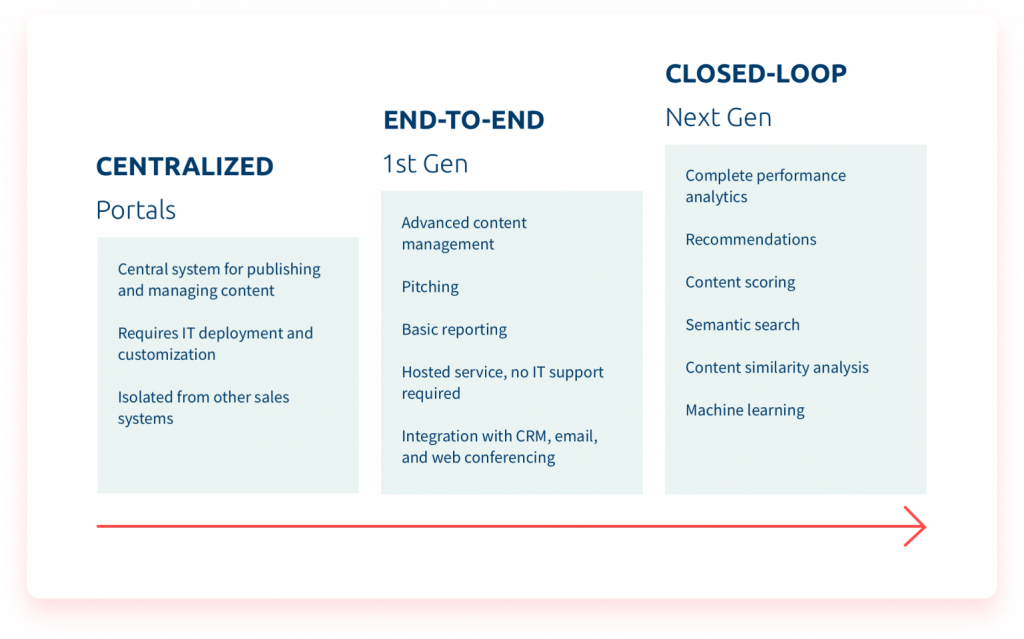
Since sales enablement is multifaceted, its supporting categories can be grouped into several types. Let’s take a look at a few of the major groups along with their functions and examples.
Customer Relationship Management

In a data-driven world, CRMs are the bare necessity for sales teams to manage and track contact data, sales activity, and client interactions. It also helps with sales forecasting by generating intelligent and customized reports. Most CRMs can be integrated with other sales enablement tools.
Examples: Salesforce, Zoho CRM, Microsoft Dynamics 365, etc.
Content Management
Sales content management systems help you create, organize and promote the most relevant content for your target audience. An ideal content management system helps you analyze your content performance and track content engagement rates.
Examples: Oracle content management, Highspot, Seismic, etc.
Sales Intelligence
These tools collect data insights from multiple sources to help you discover your ICP, analyze their behavior, and tailor your offerings to address their pain points. Sales intelligence tools offer you innovative information on your prospects like their digital footprint, business goals, purchase records, current contracts, and much more.
Examples: LinkedIn Sales Navigator, Hubspot Sales Hub, 6Sense, etc.
Also read: Unlock your B2B growth potential with sales intelligence
Sales engagement
Hubspot data indicates that salespeople spend 21% of their day drafting emails, 17% on updating data, and another 17% prospecting and researching leads. This takes a heavy toll on sales productivity. Sales engagement tools help you manage, track and optimize customer interactions by streamlining all communication methods like emails, phone calls, social media interactions, etc.
Examples: Salesloft, Autoklose, Outreach, etc.
Conclusion
By now you should realize the criticality of including a sales enablement program in your sales strategy. In a dynamic corporate environment, sales enablement can be your north star- guiding you towards higher client satisfaction and better conversions.
